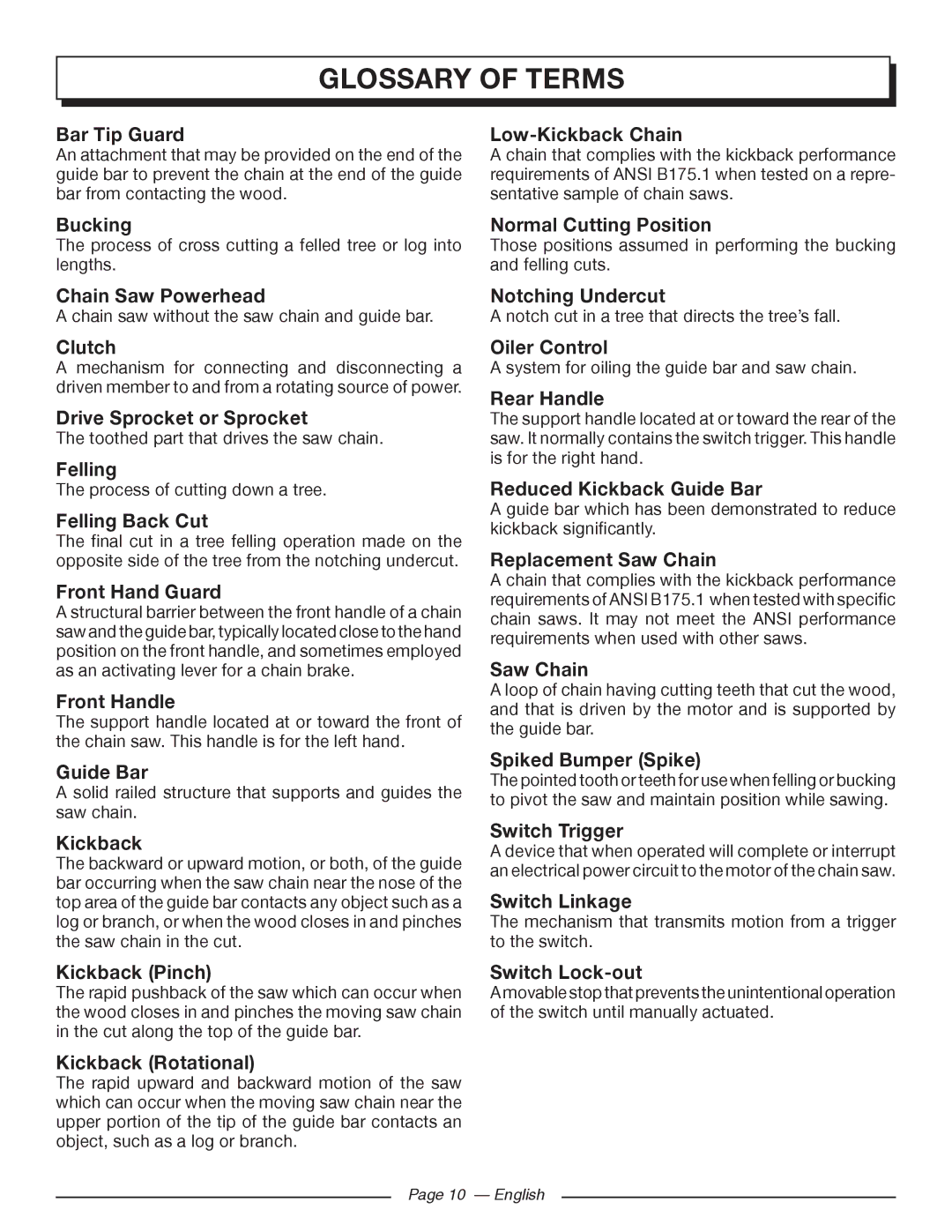UT43102, UT43122 specifications
The Homelite UT43122 and UT43102 are two powerful and efficient string trimmers designed to meet the needs of both homeowners and landscaping professionals. Known for their reliability and performance, these trimmers come equipped with features that enhance user experience and job effectiveness.At the heart of both models is a robust, high-performance electric motor that provides ample power for cutting through thick grass and weeds. The UT43122 features a 12 Amp motor, while the UT43102 has an equally impressive 10 Amp motor. These electric motors facilitate quick start-ups with minimal noise, offering a more environmentally friendly alternative to gas-powered trimmers. This makes them ideal for use in residential areas where noise restrictions may be in place.
One of the standout features of the Homelite UT43122 and UT43102 is their innovative Auto Feed String System. This technology ensures that the line is automatically advanced as needed, allowing for continuous cutting without the hassle of manual adjustments. As a result, users can focus on trimming rather than stopping to reload the line, which significantly increases productivity.
Both models are equipped with a 15-inch cutting path, enabling them to cover more ground in less time. This cutting width is augmented by a dual-line nylon string that offers superior cutting power. Additionally, the adjustable telescoping shaft allows users to customize the length of the trimmer to their preferred height, enhancing comfort during extended use.
Furthermore, the Homelite UT43122 and UT43102 boast a lightweight design, making them easy to maneuver around landscapes. The ergonomic handle features a comfortable grip, reducing fatigue during prolonged operation. These characteristics make them suitable for both professional landscapers tackling large areas and homeowners maintaining their yards.
In terms of durability, the construction of the Homelite trimmers is robust, ensuring they can withstand the rigors of outdoor use. The inclusion of a guard also protects the user from debris, promoting safety during operation.
In summary, the Homelite UT43122 and UT43102 string trimmers are equipped with powerful motors, an automatic feed system, and user-friendly features. Their lightweight design, adjustable shafts, and durable construction make them suitable for various trimming tasks, making them a valuable addition to any lawn care toolkit. Whether for professional use or home gardening, these trimmers deliver efficiency and effectiveness in tackling tough yard work.

